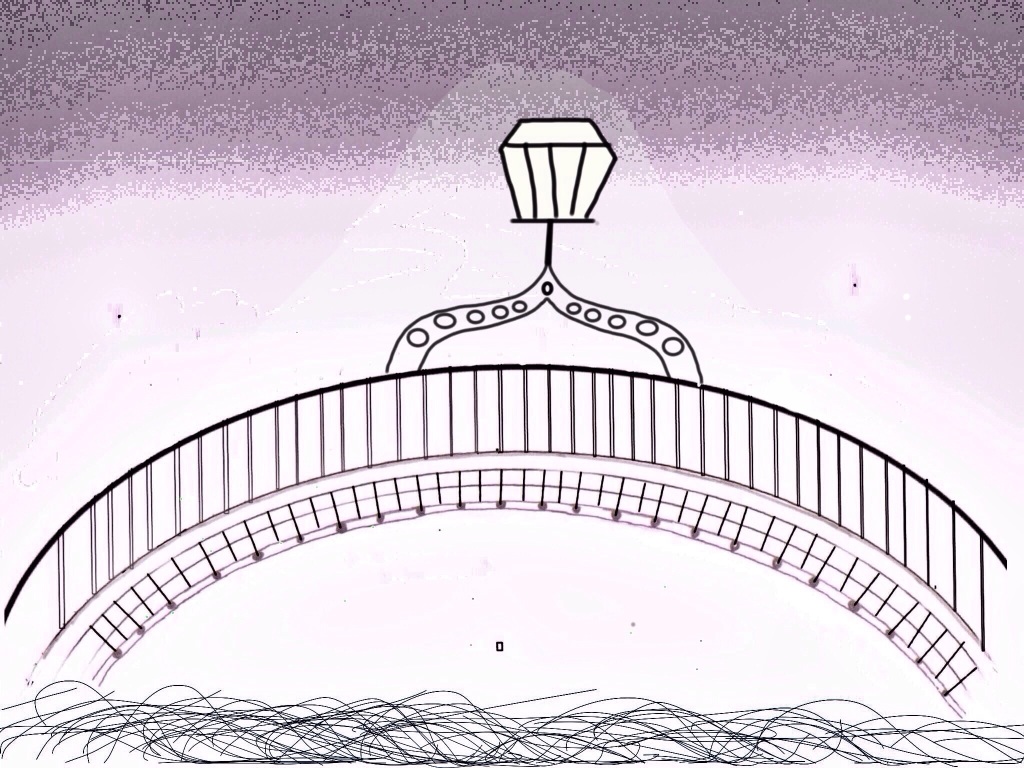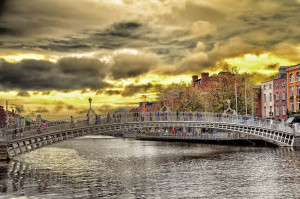
The Ha’penny Bridge is one of the world’s most well-known bridges. Anyone visiting Dublin will find it to be a wonderful gateway between the Northside of Dublin and Temple Bar. Although Ha’penny Bridge is not one of Dublin’s most incredible man-made structures, much like the Molly Malone statue it has gained an iconic place in the hearts of local residents and visitors to the city. If you have ever sent or received a postcard from Dublin then there is a good chance that the Ha’penny Bridge will appear on it somewhere.
 Whilst the Ha’penny Bridge is the most common name for the bridge, it also has several other names: the official name in recent years has been the Liffey Bridge; the historical name is the Wellington Bridge; and the Gaelic Irish name is Droichead na Life. The bridge, which was cast of iron in Shropshire England, was originally named after the Duke of Wellington. It was built in 1816 by William Walsh as an alternative to the dangerous ferry crossings that were operated at that time, and gained the name Ha’penny Bridge because pedestrians were charged one ‘halfpenny’ to cross over to the North side of the River Liffey. The ferry crossings were made defunct and the halfpenny charge for walking over the bridge was the exact toll that had been charged for the ferry crossing. Fortunately for today’s Dubliners and tourists, there is no longer a charge.
Whilst the Ha’penny Bridge is the most common name for the bridge, it also has several other names: the official name in recent years has been the Liffey Bridge; the historical name is the Wellington Bridge; and the Gaelic Irish name is Droichead na Life. The bridge, which was cast of iron in Shropshire England, was originally named after the Duke of Wellington. It was built in 1816 by William Walsh as an alternative to the dangerous ferry crossings that were operated at that time, and gained the name Ha’penny Bridge because pedestrians were charged one ‘halfpenny’ to cross over to the North side of the River Liffey. The ferry crossings were made defunct and the halfpenny charge for walking over the bridge was the exact toll that had been charged for the ferry crossing. Fortunately for today’s Dubliners and tourists, there is no longer a charge.
Part of the reason for the Ha’penny Bridge’s popularity is that, as one of Dublin’s two pedestrian-only bridges, those crossing over do not have to share their crossing with cars or other vehicles. In fact until 1999, the year of the Millenium Bridge’s construction, the Ha’penny was central Dublin’s only footbridge. The Ha’penny is sandwiched between the more impressive O’Connell Bridge – one of Dublin’s oldest bridges – and the Millennium Bridge – one of Dublin’s newest. But the Ha’penny Bridge is undoubtedly the most decorative, best constructed and most beautiful of all Dublin’s bridges.
The Ha’penny Bridge has three lamps which are supported by curved ironwork over the walkway. On the approaches to the iron walkway, on both sides of the river, there is a stone wall with a concrete finish that supports and leads up tastefully to the bridge proper. The three lamps light up the way to Temple Bar for those travelling to Temple Bar from the Northside and vice-versa. The railings on either side of the walkway are very thin and very close together, which adds to the view whilst making sure you won’t fall into the roiling waters beneath. This old bridge does creak occasionally and is known to bounce a little, but it is very safe, we can assure you! However, as the main gateway between the Northside and Temple Bar, the Ha’penny Bridge has become something of a magnet for beggars and pickpockets. Therefore it is advisable that you keep anything valuable out of sight as you cross the bridge.

The bridge was the subject of an extensive renovation in 2001, but this work did not replace much of the original structure and the bridge retains its beautiful white colour and decorative flourishes. In recent years the bridge has come to be a symbol of passion and romance in the city, due to its romantic appearance and its position as the main pedestrian footbridge between Temple Bar and the Northside of Dublin. Many a girlfriend and boyfriend have began their courtship on this bridge; many a marriage proposal has also been accepted on this – the most romantic of Ireland’s bridges. The tourist should note the lovelocks that have been attached to the railings of the structure. Who knows – if you find some holiday romance you too may leave one of your own?
